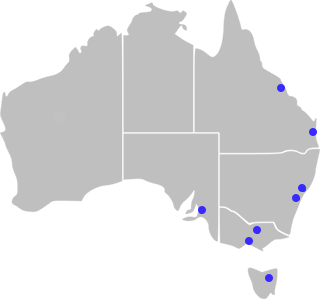Aluminium Sheet, Plate and Treadplate

| Aluminium Sheet and Coil/Strip | |
| Alloy | 1145, 3003, 3004, 3105, 5005, 5052 & 5251. |
| Temper | 0, H32, H34 & H38. |
| Thickness (mm) | 0.5 to 6.0 for sheet and coil, 0.5 to 3.0 for strip. |
| Width (mm) | 900, 1200, 1500, 2000 & customer specific width (25mm minimum). |
| Length (mm) | 1800, 2400, 3000 & customer specific length. |
| Finish | Mill & customer specific finish. |
| Coating | PE Coating (not standard). |
| Plasma profile | To customer drawings. |
| Aluminium Plate | |
| Alloy | 5005, 5052, 5083, 5186 & 5454. |
| Temper | H32, H34, H116 & H321. |
| Thickness (mm) | 4 to 25. |
| Width (mm) | 1200 to 2500. |
| Length (mm) | 2400 to 12000 & customer specific length. |
| Finish | Mill & customer specific finish. |
| Coating | PE Coating (not standard). |
| Plasma profile | To customer drawings. |
| Aluminium Treadplate | |
| Alloy | 3003 & 5052. |
| Temper | 3003 – H22, 3003 – H224 & 5052 – 0. |
| Thickness (mm) | 1.6 to 6.0. |
| Width (mm) | 1200 & 1500. |
| Length (mm) | 2400, 3000, 3600 & 6000. |
| Finish | 5 Bar Mill Finish (5052) & 1 Bar Propeller – Bright Finish (3003). |
Advantages of using Aluminium
- Light weight – approximately one-third the density of steel.
- Strength – some alloys can be substantially strengthened by work or by heat treatment.
- Workability – easily formed, machined and welded.
- Corrosion resistance – varies depending on the alloy and the best resist marine exposure.
- Non-toxic – often used in contact with food.
- Non-magnetic and non-sparking.
- Electrical conductivity – high.
- Thermal conductivity – high.
- Reflectivity – bright finish options available.
Specification
Aluminium flat rolled product stocked by Atlas Steels is most commonly specified to ASTM B209M. Product designated as plate for ship building in very specific alloys and tempers in compliance with ASTM B928M.
Further background information on these products is in “Aluminium Standards, Data and Design” published by the Aluminium Council of Australia and in “Aluminium Standards and Data” published by the Aluminium Association (USA).
The following alloys are those commonly stocked in the Atlas Steels Aluminium flat products program.
Alloy Code Derivative
| Alloy Series | Major Alloying Element |
| 1??? | Pure aluminium (99.0% and greater). |
| 2??? | Copper is major addition. |
| 3??? | Manganese is major addition. |
| 4??? | Silicon is major addition. |
| 5??? | Magnesium is major addition. |
| 6??? | Magnesium and silicon are major additions. |
| 7??? | Zinc is the major addition. |
| 8??? | Other alloys. |
Understanding an Alloy code
An alloy code is made up of 4 digits e.g. 5052 where:
- 5 = major alloying element i.e. magnesium.
- 0 = Indicates changes to minor alloying elements i.e. no changes to original alloy since it was introduced.
- 52 = Alloy identification number i.e. identifies the chemical composition of this alloy.
Alloy Code derivative used in Rolled Products
| Alloy | Example Alloy |
| 1??? | 1145. |
| 3??? | 3003. |
| 5??? | 5052. |
Heat Treatable and Non-Heat Treatable Alloys
| Alloy | Treatable/Non-Treatable |
| 1??? | Non-heat treatable. |
| 2??? | Heat treatable. |
| 3??? | Non-heat treatable. |
| 5??? | Non-heat treatable. |
| 6??? | Heat treatable. |
| 7??? | Heat treatable. |
Non-heat treatable alloys can be hardened by cold work. The degree of work hardening is designated by the Temper. Heat treatable alloys (the 2000, 6000, and 7000 series) can be solution treated and then age-hardened.
Temper Designation Systems
H Tempers
| Temper | Hardness |
| 0 | Soft. |
| H?2 | 1/4 hard. |
| H?4 | 1/2 hard. |
| H?6 | 3/4 hard. |
| H?8 | Hard. |
Where “?” can be read as:
1 = As rolled – no final anneal e.g. H12.
2 = Strain hardened and then partially annealed e.g. H24.
3 = Strain hardened and then stabilised (at a lower temperature) e.g. H34.
Three-Digit H Tempers
For marine applications there are specific tempers in select high magnesium alloys. Atlas stock is of alloy 5083, usually in H116 temper. An alternative is H321 with virtually identical properties. H116 tempers are strain hardened as a final operation and H321 tempers are thermally stabilised.
CLIENT RESOURCES
PRODUCT
MANUAL
PREN
CALCULATOR
CE
CALCULATOR
PRODUCT WEIGHT
CALCULATOR
TECHNICAL
LIBRARY
CONTACT US | 8 SERVICE CENTRES ACROSS AUSTRALIA
LAUNCESTON
Contact Us
SHEPPARTON
LAUNCESTON
COPYRIGHT
© Copyright 2021
Atlas Steels
ISO 9001 Certification
CONTACT US
Phone: 1800 4ATLAS
or: 1800 428527

